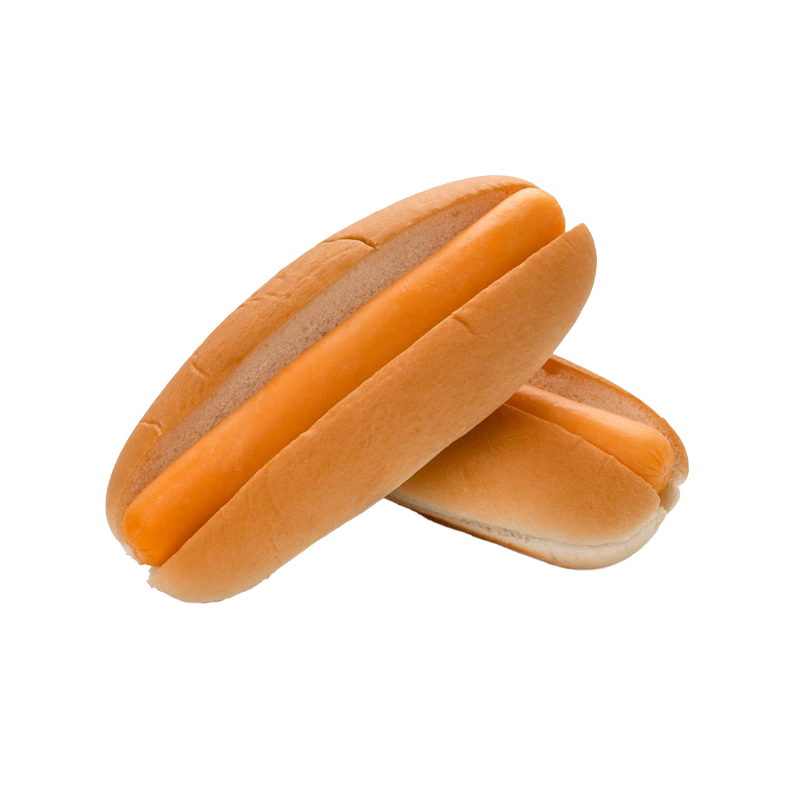Hot Dogs — Nutrients, Health Benefits, And Shopping Tips

Written by Listonic Team
Last update on September 4, 2024
Nutrition facts
Nutrition facts
Amount per 100 g
Calories
🔥 290 kcal
| Nutrition per: 100 g | Value | % Daily Value* |
|---|---|---|
| Carbs | 2 g | 0.73% |
| Fiber | 0 g | - |
| Sugars | 0 g | - |
| Glycemic Index | 28 | - |
| Protein | 11 g | 22% |
| Sodium | 1230 mg | 53.48% |
| Total Fat | 27 g | 34.62% |
*The % of Daily Value (DV) tells you how much a nutrient in a serving of food contributes to a daily diet. 2,000 calories a day is used for general nutrition advice.
11 g
🧀 Good Protein Content
28
🟢 Low Glycemic Index
Did you know?
Health benefits
- Provides protein, essential for muscle growth, repair, and overall body function.
- Contains essential vitamins and minerals such as Vitamin B12, iron, and zinc, which support energy metabolism, immune function, and overall health.
- Versatile and convenient, making them an easy meal option.
Health risks
- High fat content particularly in traditional beef or pork hot dogs, which can raise cholesterol levels and increase the risk of heart disease when consumed frequently.
- High sodium content in many commercial hot dogs, which can contribute to hypertension and increased cardiovascular risks.
- Presence of nitrates and nitrites used in curing hot dogs, which have been linked to an increased risk of cancer, particularly colorectal cancer.
- Risk of contamination with harmful bacteria such as Listeria or E. coli, particularly if the hot dogs are not properly cooked or stored.
How to choose hot dogs
Hot dogs should have a firm, juicy texture and a smooth, appetizing color. They should smell fresh and have a savory, meaty flavor. The casing should be tight and snap lightly when bitten.
Do not choose hot dogs that are slimy or have an off-odor, which are signs of poor quality. Good hot dogs should be flavorful and enjoyable whether grilled, boiled, or pan-fried.

How to store hot dogs
Hot dogs should be kept in the refrigerator. Store them in their original packaging or transfer to an airtight container. Properly stored, hot dogs remain fresh and safe to eat.
Leaving hot dogs out for too long can lead to bacterial growth. It's important to avoid multiple freeze-thaw cycles, as this can affect their texture. Consistent refrigeration ensures they stay juicy and delicious.
✅ Extra Tip
How long do they last?
Hot dogs can last for 1-2 weeks in the refrigerator if unopened. Once opened, they should be consumed within 3-5 days. For longer storage, hot dogs can be frozen for up to 1-2 months.
What to do with leftovers?
Leftover hot dogs can be used in a variety of fun and easy dishes. Slice them and add to macaroni and cheese for a kid-friendly meal, or chop them up and mix into a pasta salad with mayonnaise and vegetables. Hot dogs are also great when sliced and added to stir-fries with vegetables and a savory sauce.
Use hot dogs in a breakfast scramble with eggs, cheese, and potatoes, or wrap them in dough and bake for pigs in a blanket. If you have a lot of hot dogs, consider making a batch of hot dog skewers with vegetables, perfect for grilling or roasting. Hot dogs can also be sliced and added to a pizza with cheese and sauce, or used as a topping for nachos with melted cheese and jalapeños. For a quick snack, reheat hot dogs and serve with your favorite dipping sauces or chop them up and mix into baked beans for a classic combo.
👨⚕️️ Medical disclaimer
Discover products from other categories
Listonic Team
Fact-checked
Our editorial team checked this article to make sure it was accurate at the time of publishing it.
Get the top-rated shopping list app

hot dogs
1 piece







